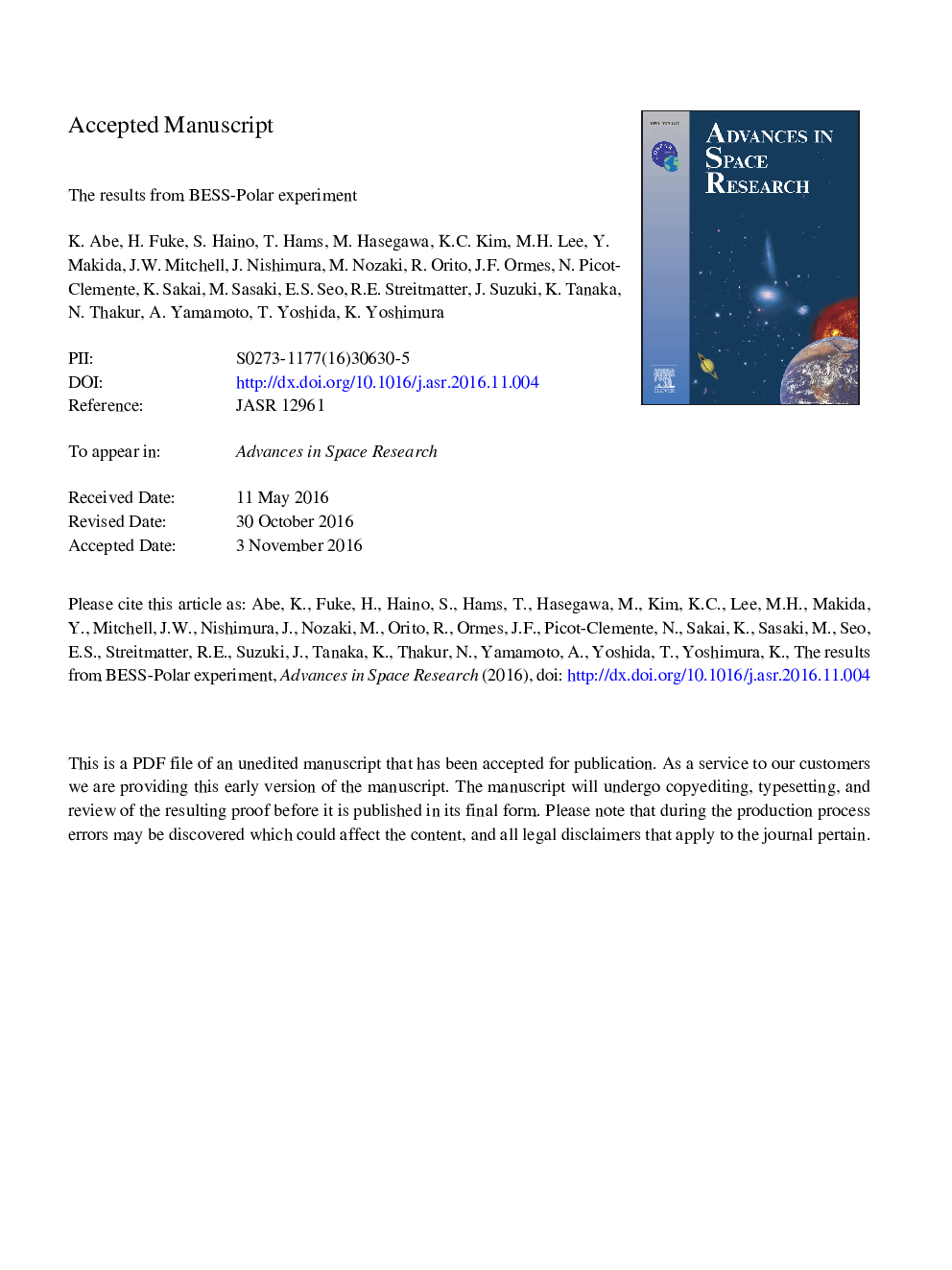| Article ID | Journal | Published Year | Pages | File Type |
|---|---|---|---|---|
| 5486632 | Advances in Space Research | 2017 | 21 Pages |
Abstract
The balloon-borne experiment with a superconducting spectrometer (BESS) instrument was developed as a high-resolution, high-geometric-acceptance magnetic-rigidity spectrometer for sensitive measurements of cosmic-ray antiparticles, searches for antinuclei, and precise measurements of the absolute fluxes of light GCR elements and isotopes. The original BESS experiment flew 8 times over Lynn Lake, Canada and once from Fort Sumner, USA during the period of 1993 through 2002, with continuous improvement in the instrument. Based on the instrument concept inherited from the BESS spectrometer, a very low instrumental energy cutoff for antiprotons was achieved with a new thin-walled superconducting magnet and removal of the outer pressure vessel for BESS-Polar project. The first and second scientific flights called BESS-Polar I/II were successfully performed, over Antarctica in 2004 December and 2007 December respectively. We report the scientific results, focusing on the long-duration flights of BESS-Polar I (2004) and BESS-Polar II (2007-2008).
Related Topics
Physical Sciences and Engineering
Earth and Planetary Sciences
Space and Planetary Science
Authors
K. Abe, H. Fuke, S. Haino, T. Hams, M. Hasegawa, K.C. Kim, M.H. Lee, Y. Makida, J.W. Mitchell, J. Nishimura, M. Nozaki, R. Orito, J.F. Ormes, N. Picot-Clemente, K. Sakai, M. Sasaki, E.S. Seo, R.E. Streitmatter, K. Yoshimura,
